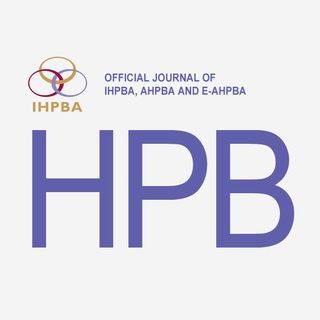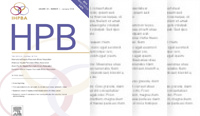International Hepato-Pancreato-Biliary Association
What's new with HPB?

The current editorial team for HPB is now into it’s 5th year and many things have progressed since 2008. The journal is now well established as a leading repository for new and exciting research in the field of surgical HPB. The aim of this forum is to help IHPBA members stay up to date and abreast of new research from HPB and educational opportunities via myHPB and the HPB virtual journal club.
The current year has continued to see an ongoing increase in the quality of manuscripts submitted to HPB such that the acceptance rate has dropped to 26% for the current year. Not surprisingly in the latest November issue there are several high quality articles across the spectrum of HPB disease some of which are highlighted by the editorial team.
Of particular interest is a paper entitled cost benefit analysis of mesh reinforcement of stapled left pancreatectomy by Idrees et al. This originates from one of the top HPB units in the world and follows on from the authors’ previous randomized trial which conclusively showed near eradication of pancreatic stump leak following left pancreatectomy by the use of an absorbable mesh to reinforce the pancreatic staple line. Within the trial there was a reduction in clinically significant pancreatic leaks from 24% to 2% by the use of mesh reinforcement. Within the current paper the authors asked the question “was there a cost benefit to using mesh reinforcement for the population of patients undergoing left pancreatectomy”? The costings were based on prices from the US health system and therefore this needs to be taken into account for those in different health care systems especially if healthcare costs for similar procedures vary significantly from those in the US. The probabilities of various events and outcomes were based on those observed in the authors’ randomized trial. Although this was an excellent trial and these figures would seem representative the trial did include less than 100 patients and was a single institution study. The authors have calculated that based on a mesh costing US$165 it was cost effective if the probability of a leak from the pancreatic stump was <53%. Alternatively as long as the mesh cost less than US$1804 to use it was cost-effective. Although this paper focused on cost effectiveness from a payer’s perspective it is hard to believe from the clinical results that this would not benefit the patients directly as well given the morbidity associated with clinically significant pancreatic stump leaks. Whether a selective approach to those at high risk of pancreatic stump leak could be applied to further improve the effect remains unanswered. It is unclear in this authors mind what those specific risk factors for left pancreatic stump leak might be and doubt exists whether those factors that have been identified for patients undergoing pancreaticoduodenectomy can be extrapolated.
A recent addition to the educational opportunities for IHPBA members has been the development of myHPB which is now up and running via the IHPBA website. This exciting new way of learning has incredible potential and opens the way for the HPB community to develop an e-learning platform for trainees, fellows and current consultant surgeons. I would strongly recommend all members to login, view and contribute to this site. It can only be as good as the information and contributions provided.
For someone who lives at the bottom of the world the tyranny of distance is rapidly fading as technology allows high quality video to be viewed, asynchronous discussion to be had with people across multiple continents. Already the North American and Australasian fellows have collaborated to run a virtual journal club based on those created from articles published in HPB. They are currently contributing to a “case of the month” whereby the investigation and management of current HPB issues have been posted and moderated on by programme directors many of which are world experts. Clearly the potential of this forum is vast. It is easy to envisage IHPBA chapters forming their own discussion boards. The subsequent personal contributions could be assessed objectively to help complete a CPD portfolio or even could be used as a component of a training programmes assessment. This continuous learning and assessment environment meets many of the recommendations of modern educational constructs. Issues that need to be taken into consideration are meeting privacy requirements if patient images or videos are to be uploaded and ensuring copyrights are not breached when referring to other published material. Perhaps the best way to avoid such problems is to use links to the source rather than pasting a copy. This has the advantage of ensuring that if the original data is updated the reference directs members to the most recent version. This would seem particularly important for guidelines.
Virtual journal club has been developed over the last 3 years with the idea of identifying an important topic for HPB readers and pulling together the best published articles in HPB on such a topic to allow people to then select ad run their own journal club. Open access to articles is provided to ensure ease of access. The journal clubs are updated regularly to ensure they remain current and people can revisit on a cyclical basis. Each three months a new topic is released. In addition world experts have been sort to provide videos that complement the topic. Five to six articles are selected and learning objectives provided. This allows the building of a foundation of core topics for HPB- a major resource for trainees and consultant surgeons alike. As HPB continues grows in stature the quality of these journal clubs will exponentially increase. Topics covered so far include acute pancreatitis, bile duct injury, mucinous neoplasms of the pancreas, pancreatic adenocarcinoma, resectional techniques in liver surgery, management of HCC. The virtual journal club can be accessed under the special features section of the HPB home page.
Corporate Partners
If you are interested in becoming a Corporate Partner of the IHBPA please contact industry@ihpba.org
Find out more


